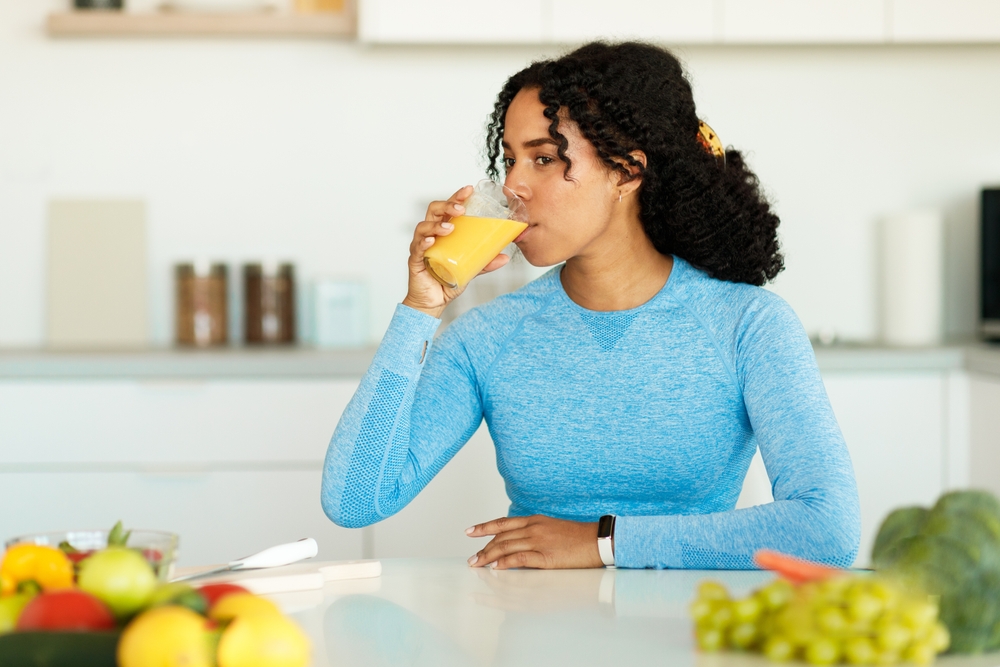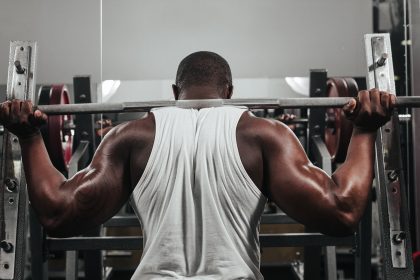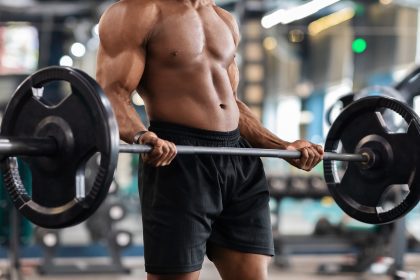What you sip throughout the day might be undermining your workout efforts more than you think. These seemingly innocent drinks can add hundreds of calories and affect your body in ways that directly counter your exercise and nutrition plans.
Achieving fitness goals requires dedicated effort both inside and outside the gym. While most people focus on exercise routines and meal planning, beverages often fly under the radar despite their significant impact on overall results. The right hydration choices support recovery and performance, but the wrong ones can silently sabotage even the most disciplined fitness enthusiasts.
The beverages people consume daily can dramatically affect everything from calorie intake and hunger regulation to metabolism and muscle recovery. Understanding which popular drinks might be hindering progress represents a crucial yet often overlooked aspect of fitness success. Making informed choices about what fills your glass could be the missing piece in your wellness puzzle.
Specialty coffee drinks pack a caloric punch
That morning coffee shop stop might be delivering far more than just caffeine. Specialty coffee beverages have evolved from simple pick-me-ups into dessert-like indulgences that bear little resemblance to plain black coffee. These elaborately crafted drinks often combine multiple high-calorie ingredients that can significantly impact fitness progress.
The largest sizes of popular flavored lattes can contain over 500 calories — equivalent to a full meal — with some exceeding 600 calories when topped with whipped cream and drizzles. More concerning than the calorie count is the composition of these calories, with many drinks containing 60-75 grams of sugar, well above the recommended daily limit in just one beverage.
The nutritional profile becomes even more problematic when considering the specific ingredients. Many coffee shop favorites rely on flavored syrups that contain high-fructose corn syrup, which studies suggest may impact metabolism differently than other sweeteners. Additionally, the saturated fat content in whole milk and whipped cream can reach 15-20 grams in larger sizes, approaching the daily recommended maximum.
Beyond the direct caloric impact, these beverages can affect fitness goals through their influence on appetite and energy levels. The combination of caffeine and sugar creates a temporary energy surge followed by a crash that often leads to increased hunger and cravings for more carbohydrates. This blood sugar roller coaster can trigger additional snacking or poor nutritional choices throughout the day.
For those tracking macronutrients as part of their fitness regimen, specialty coffee drinks create particular challenges. The liquid calories deliver little satiety compared to solid foods with similar caloric values, making them easy to overconsume without feeling fuller. Regular consumption can create a significant calorie surplus that directly counters weight management goals.
The timing of these beverages can further compound their impact. Consuming high-sugar coffee drinks pre-workout may cause energy crashes during exercise, while post-workout consumption might interfere with proper recovery nutrition by displacing more beneficial protein-containing options during the crucial recovery window.
Alcoholic beverages derail progress in multiple ways
Alcoholic drinks present perhaps the most multifaceted challenge to fitness goals, affecting everything from recovery and performance to nutrition and sleep quality. Their impact extends far beyond their caloric content, though that alone presents significant concerns for those monitoring their intake.
The caloric density of alcoholic beverages surprises many fitness enthusiasts. A single serving of hard alcohol contains approximately 100 calories before any mixers, while craft beers can range from 150-300 calories per 12-ounce serving. Wine delivers roughly 120-150 calories per 5-ounce glass. Weekend social drinking can easily add 1,000+ additional calories, potentially eliminating an entire week’s caloric deficit.
Mixed drinks pose particular problems due to their sugar content. Popular cocktails like margaritas, piña coladas, and flavored martinis can contain 30-50 grams of sugar per serving. This combination of alcohol and sugar creates a double metabolic burden, as the body prioritizes metabolizing alcohol over fat burning while simultaneously managing a sugar spike.
Beyond caloric concerns, alcohol significantly impacts hormonal balance crucial for fitness progress. Even moderate consumption temporarily suppresses testosterone production, a vital hormone for muscle development and recovery in both men and women. Research indicates levels can decrease by up to 23% following alcohol consumption, potentially blunting the adaptive response to resistance training.
The recovery process suffers additional setbacks through alcohol’s interference with protein synthesis, the cellular process essential for muscle repair and growth. Studies demonstrate that consuming alcohol post-exercise can reduce protein synthesis rates by 15-20%, essentially diminishing the effectiveness of workouts and extending recovery time between training sessions.
Sleep quality, arguably one of the most underappreciated components of fitness success, deteriorates with alcohol consumption. While alcohol may help with falling asleep initially, it disrupts REM sleep and overall sleep architecture, leading to less restorative rest. This sleep disruption affects everything from hormone production to recovery rates and next-day exercise performance.
Dehydration represents another significant concern, as alcohol acts as a diuretic, increasing fluid loss while simultaneously reducing the body’s ability to rehydrate effectively. This dehydration directly impacts exercise performance, potentially reducing strength and endurance capacity by 10-15% for workouts in the 24 hours following consumption.
Smoothies and juices hide surprising setbacks
Fruit smoothies and juices enjoy a health halo that often leaves fitness enthusiasts blind to their potential drawbacks. These beverages seem like natural choices for supporting an active lifestyle, but their nutritional profile can create unexpected obstacles to fitness progress when consumed regularly or in large quantities.
Commercial smoothies often contain surprisingly high calorie counts, with many popular 20-ounce offerings ranging from 300-700 calories. These totals often exceed what would be consumed by eating the whole fruits contained within them, creating a caloric density that can easily push daily intake beyond intended targets without delivering proportional satiety benefits.
Sugar content presents the most significant concern, even when coming exclusively from fruit. Many commercial smoothies contain 50-80 grams of sugar, and while this naturally occurring sugar comes packaged with vitamins and minerals, the body processes it similarly to added sugars when extracted from the fruit and concentrated in liquid form.
The glycemic impact of smoothies and juices exceeds that of whole fruits due to several factors. The blending and juicing process breaks down fiber, allowing sugars to enter the bloodstream more rapidly. Additionally, the much larger quantity of fruit typically used in smoothies versus what someone would eat whole leads to higher overall sugar loads and more pronounced insulin responses.
Portion sizes exacerbate these issues, with commercial establishments often serving 20-32 ounce portions that contain the sugar equivalent of eating 4-6 whole fruits in a matter of minutes. This concentrated delivery of fruit sugars creates a metabolic response that can interfere with fat oxidation for hours after consumption.
Juice presents even greater challenges than smoothies due to the complete removal of fiber. Without this crucial component, fruit juice delivers sugar to the bloodstream with minimal buffering effect, creating insulin spikes comparable to those from sodas or other sweetened beverages. The absence of fiber also eliminates much of the satiety benefit that whole fruits provide.
Protein content, a critical nutrient for fitness enthusiasts, often remains inadequate in fruit-focused beverages. While some smoothies incorporate protein powder, many commercial versions prioritize fruit and fruit juices, creating a high-carbohydrate beverage that lacks the protein necessary for muscle recovery and development.
The timing of smoothie consumption particularly matters for those with specific fitness goals. The high sugar content makes these beverages potentially counterproductive when consumed before workouts, as they can trigger insulin spikes followed by energy crashes during exercise. Similarly, their carbohydrate-dominant profile makes them suboptimal post-workout when protein intake should take priority for recovery.
Strategic substitutions that support fitness goals
Making informed beverage choices doesn’t require complete deprivation. Strategic substitutions and modifications can allow for enjoyable drinks that align with rather than undermine fitness objectives.
For coffee lovers, simple adjustments dramatically improve nutritional profiles. Requesting fewer pumps of flavored syrup (or sugar-free alternatives), choosing plant-based milks, opting for smaller sizes, and skipping whipped cream can transform a 500-calorie indulgence into a 150-calorie treat that still satisfies cravings without derailing progress.
Alcohol consumption can be managed more effectively through mindful choices. Selecting lower-calorie options like spirits with zero-calorie mixers, dry wines, or light beers reduces caloric impact. Setting specific limits on drinking occasions and ensuring proper hydration by alternating alcoholic beverages with water minimizes both caloric and recovery impacts.
Smoothie modifications create more fitness-friendly options. Building beverages with a focus on vegetables rather than fruits dramatically reduces sugar content while maintaining nutrient density. Adding protein sources like Greek yogurt or protein powder improves the macronutrient balance, while keeping portions moderate ensures the overall caloric load remains appropriate.
Hydration alternatives provide flavorful options without caloric concerns. Infused waters with fresh fruit, herbs, or cucumber slices deliver refreshing taste without sugar or calories. Unsweetened tea varieties, both hot and iced, offer flavor diversity and potential metabolism-supporting benefits depending on the tea selected.
Timing considerations can help minimize the impact of occasional indulgences. Consuming higher-sugar beverages immediately before or after intense workouts, when the body can better utilize carbohydrates, reduces their negative effects compared to consuming them during sedentary periods.
Understanding the psychological component of beverage choices
Beyond their direct nutritional impact, beverages often serve psychological purposes that should be acknowledged when making changes. Many people associate specific drinks with relaxation, celebration, or social connection, making complete elimination potentially unsustainable.
Creating balanced approaches that include occasional planned indulgences typically leads to better long-term adherence than strict restriction. Setting specific occasions for enjoying favorite beverages while maintaining healthier choices most of the time allows for both progress toward fitness goals and life enjoyment.
Awareness of beverage marketing plays an important role in making informed choices. The fitness and health claims on many commercial beverages often emphasize selective benefits while downplaying potential drawbacks. Understanding how to interpret nutrition labels and look beyond front-of-package claims empowers better decision-making.
Habit formation around new beverage choices typically requires 3-4 weeks of consistent practice. During this transition period, taste preferences gradually adjust, often leading to decreased desire for overly sweetened options. Many people report that previously enjoyed sugary beverages eventually taste excessively sweet after adapting to less sweetened alternatives.
Environmental adjustments support successful beverage habit changes. Keeping water readily accessible, preparing healthier options in advance, and creating visual reminders about beverage goals all contribute to successful long-term behavior change around drink choices.
The cumulative impact of daily beverage choices
The true significance of beverage selection emerges when considering their cumulative effect over time. Single instances of any drink have minimal impact on overall fitness, but regular consumption patterns create substantial nutritional influences that can either support or undermine physical goals.
For weight management specifically, research suggests that liquid calories contribute significantly to overall intake without providing proportional satiety signals. This effect can lead to consuming 15-20% more total daily calories when caloric beverages are included versus when they’re replaced with zero-calorie alternatives.
Consistency with better beverage choices often creates a cascade of positive health effects beyond direct caloric impact. Improved hydration status enhances exercise performance, while reduced sugar intake leads to more stable energy levels throughout the day, potentially supporting better food choices and workout quality.
The concept of caloric efficiency becomes particularly relevant when evaluating beverages. Fitness enthusiasts benefit from considering whether their caloric intake delivers maximum nutritional value and satisfaction. By this measure, many popular beverages represent “empty” calories that could be better allocated to whole foods that support recovery and performance.
Tracking beverages, even temporarily, often reveals surprising patterns and creates awareness that supports better choices. Many people discover they consume hundreds of unaccounted daily calories through drinks simply because these items haven’t been viewed as significant contributors to overall nutrition.















